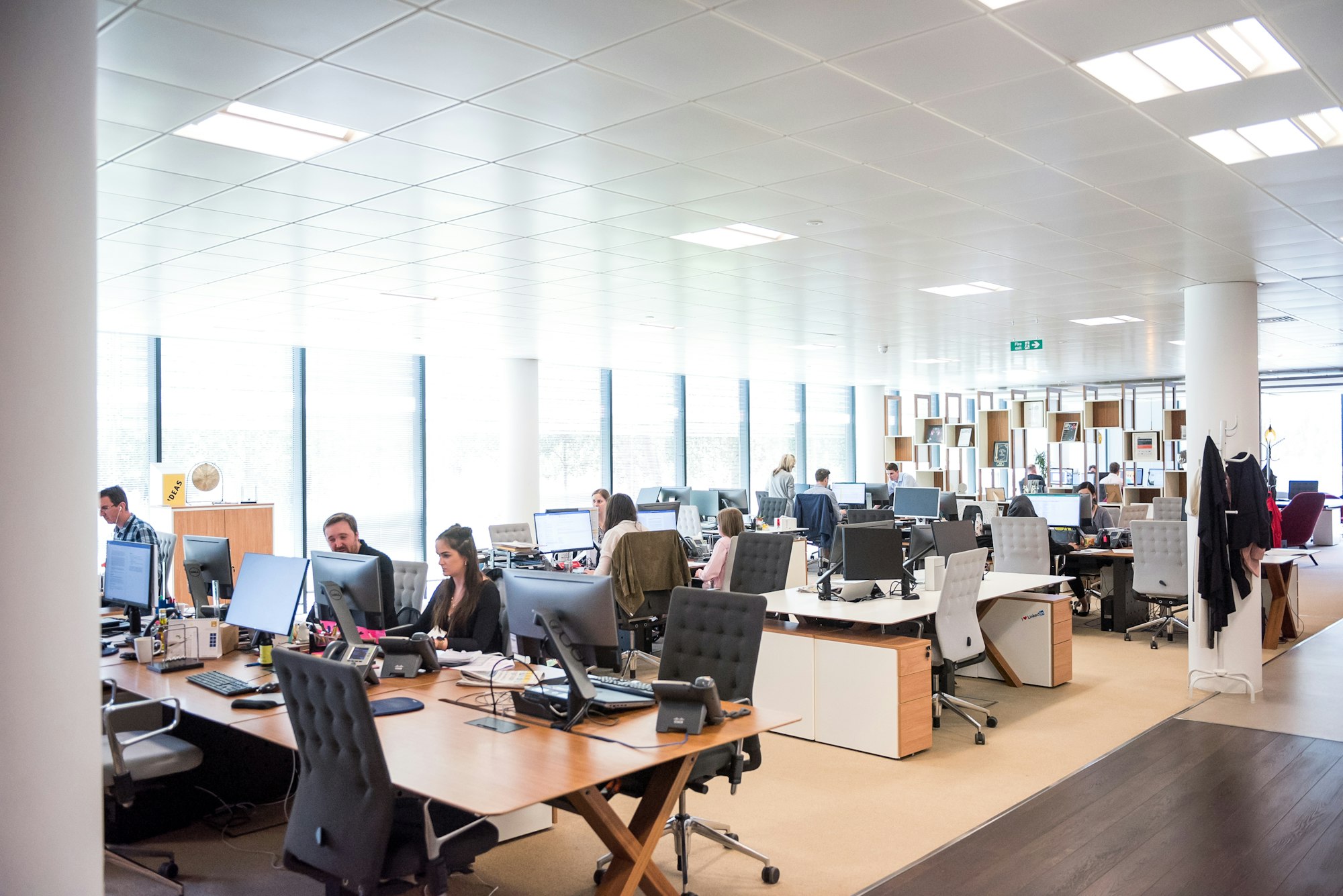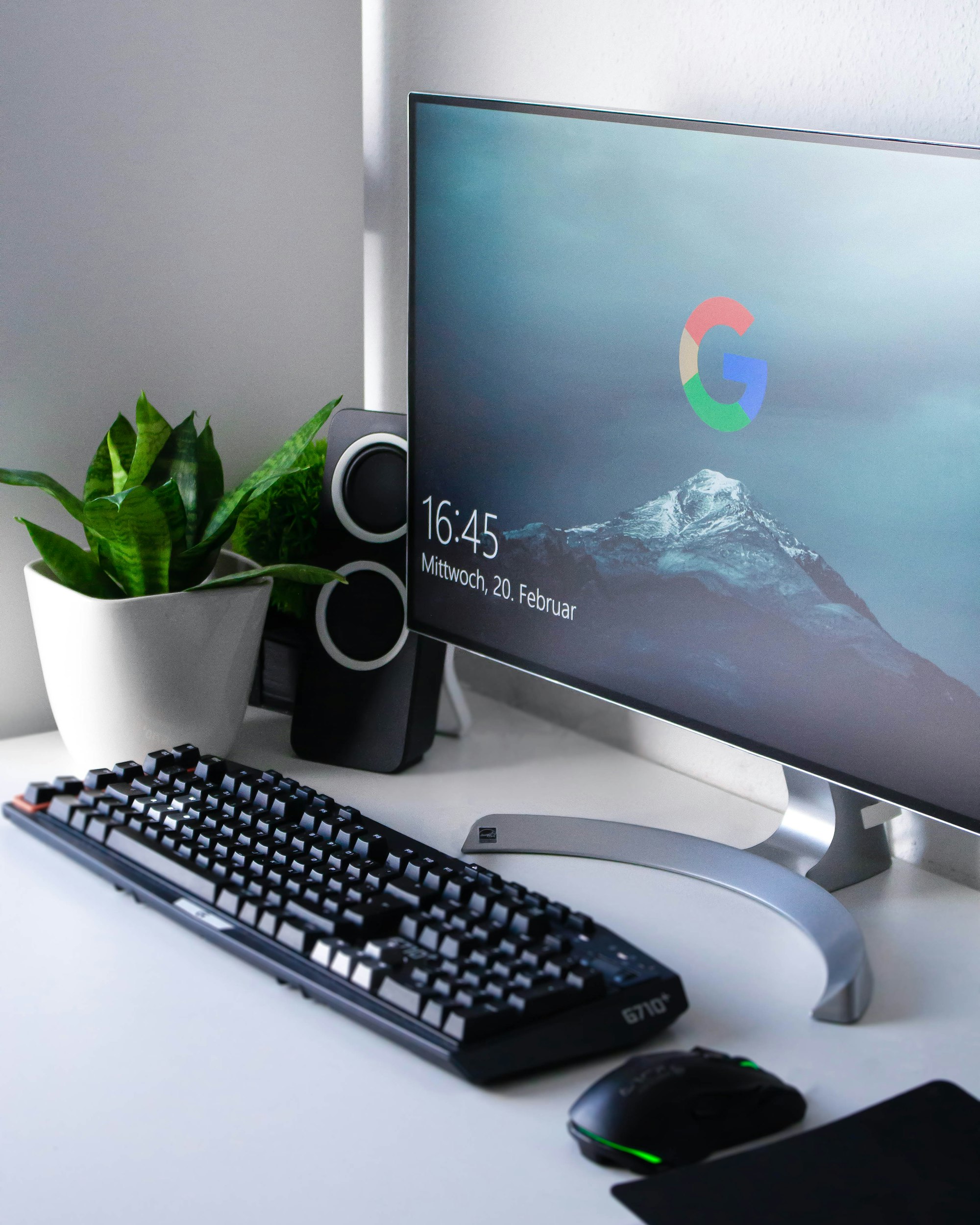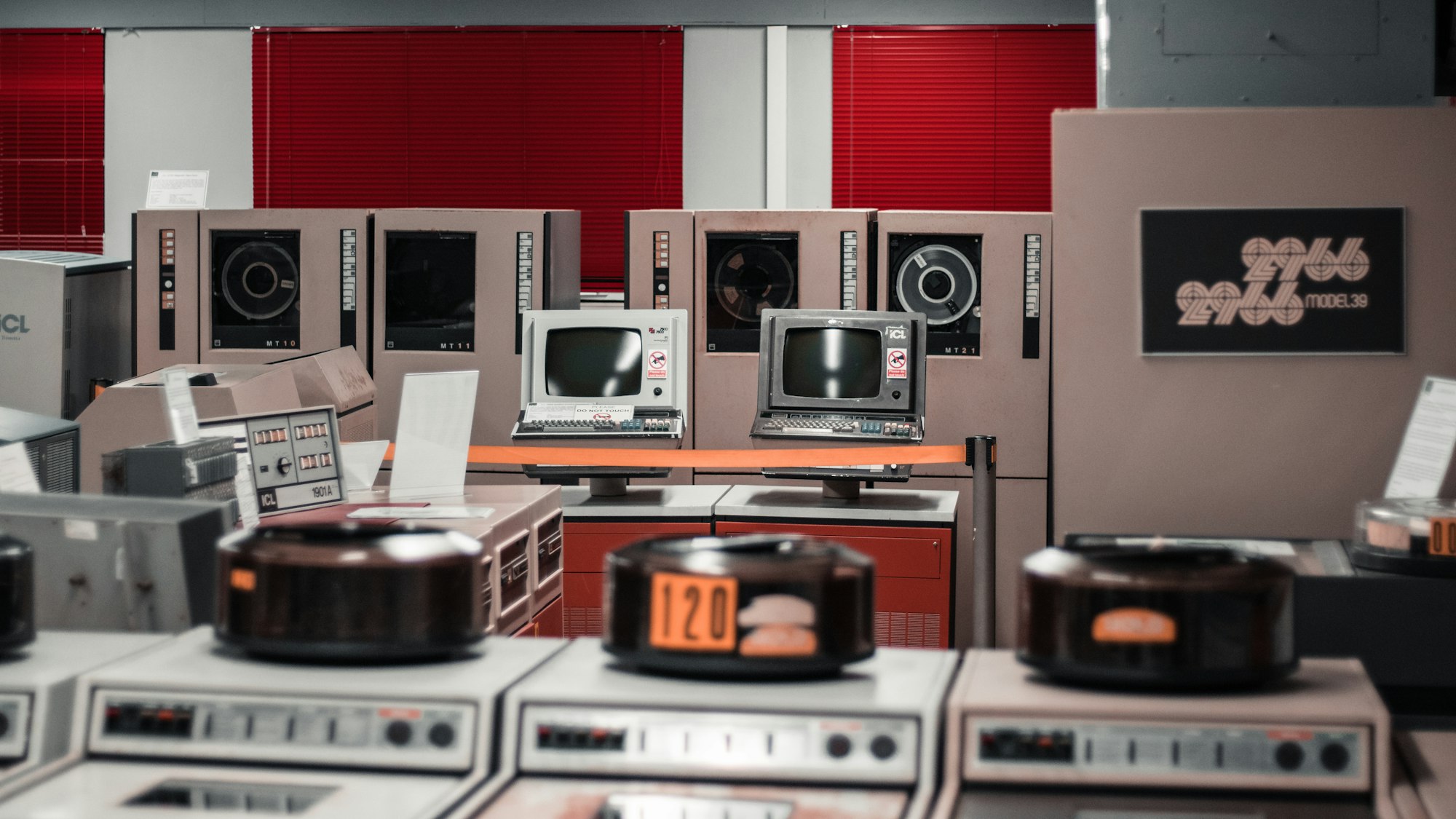Types of Computers

There are various types of computers - PCs or Desktops, Notebook or Laptops, Tablets, Smartphones, Smartphones and Mainframes with each having their own users, advantages and disadvantages. Lets study them in detail.
What are the various types of computers?
There are various types of computers with the common being as follows:
PC/Desktop
It refers to a general purpose computer which is made of separate monitor, keyboard, mouse and processor unit. The term PC usually refers to computer systems which are IBM compatible thus distinguishing them from Macintosh machines.
Desktop Computer
Advantages
- Spare parts and connections are generally standardised resulting in low cost of maintenance.
- Desktops have better specifications (faster processors) for a given price.
- Power consumption is not of a concern as they plug directly into a wall socket and the larger casing allows good dissipation of heat that might buildup.
- Further, as they are fixed in one location, chances of being damaged is minimised.
- Also, internet access is more stable as they are not moved around resulting in same data transfer rate from the internet.
Disadvantages
- Desktops are not particularly portable since they are made up of separate components.
- All the components need to be connected by wires which can be quite complex and take more space if they are moved around.
- Because they are not portable, it is necessary to copy files when you do your work elsewhere.
Laptop
Laptop or notebook refers to the type of computer where the monitor, keyboard, mouse, processor are all together in a single unit. This makes them extremely portable. The key features are Light weight, low power consumption and Processor which does not generate much heat.
Laptop
Advantages
- They are very portable.
- No trailing wires.
- Advantages of Wi-Fi.
- Since they are portable, they link into any multimedia system.
Disadvantages
- They have limited battery life so user needs to carry a heavy adapter.
- Since they are portable, probability of breakages are high and also easier to steal.
- Keyboard and pointing devices are awkward to use.
- Being compact they generate more heat than desktops.
Tablets
Tablets are a relatively new invention that are internet-enabled portable computers. They work similar to a smartphone and are touch-screen based without a keyboard though some hybrid of tablets and laptops are also available. Internet access is generally through Wi-Fi or 3G/4G/5G (mobile phone) connectivity or sim cards. They are equipped with sensors like microphones, camera, touch screens, etc.
Tablet
Some of the features of tablets are:
-
Lower weight and longer battery life than laptops
-
Bluetooth connectivity to external devices like printers
-
High-definition, anti-glare displays
-
Front and back facing cameras for taking photos and videos or use as a webcam for webcalls on the internet
-
Flash (solid state) memory and cloud facilities for backup and synchronise data sources
-
Built-in sensors which can carry out functions like:
- accelerometer, which detects movement and orientation of the device like moving the display from portrait to landscape to view videos
- proximity sensors to detect if the device is to, say, the ear, which will then block unintended touches
- speech recognition systems to enable the user to ask the device to do certain actions like setting the alarm, searching the internet for something.
Nowadays a hybrid version of a tablet and smartphone has come called as phablet which are slightly smaller than a tablet but slightly larger than a smartphone and allows a user to make phone calls, send SMSes, etc as well as features of a tablet like opening multiple windows, etc.
Advantages of tablets compared to laptops
- Fully portable as they are very light and can be easily carried anywhere.
- Due to the touch-screen feature, they are very easy to use and do not require any other input devices.
- Switch on very fast unlike the windows system in laptops.
- Has many Apps as standard like a built-in camera, speakers, etc.
- When the power button is pressed, it goes in standby mode, however, it still remains connected to the internet and alerts the user when an email is received or other 'events' happen.
- As they are using solid state technology, they do not generate any heat.
- Has much longer battery life than a standard laptop.
Disadvantages of tablets compared to laptops
- Typing on a touch screen is cumbersome and is prone to errors when compared with a normal keyboard.
- They have lesser memory or storage compared to a laptop.
- They will be expensive to run if internet is accessed frequently over mobile networks.
- Transferring of files has to be done through Apps store as there is no app to drag and drop files and is cumbersome and irritating for the user.
- Laptops support more file format types than tablets and also are better equipped to run different types of softwares.
Smartphones
Smartphones have operating systems like Android, iOS or Windows, due to which they can used not only to make phone calls but also allows them to run a number of computer applications called Apps. These allows users to send/receive emails, use the camera to take photos/videos, use payment wallets apps to make utility payments, etc.
Smartphone
Smartphones connect to the internet using the mobile phone networks (3G/4G/5G) or through Wi-Fi hot spots. They have hundreds of apps, that allow users to make various activities prominent being:
- Calendar functions
- Send/receive mails
- Surf the net for example to get latest news or order goods and services on the move
- Global positioning system for use of maps to navigate to a location
- Instant messaging
- Phone banking
- Streaming of videos
- Video calling
- Instant access to social media to keep in constant touch with relatives and friends irrespective of their location in the world
The next generation of smartphones are expected to use touch screens with OLED (organic light-emitting diode) technology where the touch screens would be coated with a crystalline layer which will make the phone partially solar powered and will use Li-Fi (use visible light) instead of Wi-Fi, for communication which is conseriderably faster and more secure than Wi-Fi and can be used on flights as it does not use radio waves.
Advantages
- Can be used to make phone calls as well as connect to the internet on the move.
- Being small in size and lightweight, they are easy to carry around on our person unlike laptops which are much bulkier and also much heavier.
- As they use Wi-Fi and mobile phone networks, they can be used almost anywhere which is not the case with laptops or PCs, although tablets also use the same technology.
- They have hundreds of Apps like phone banking, payment wallets, camera facility, etc, which is similar to tablets, but it is advantage over laptops.
- They have a reasonable battery life compared to laptops.
Disadvantages
- Web browsing and photography drains the battery quickly.
- Memory size in most phones isn't very large when compared to laptops and PCs, although it is comparable with tablets.
- Not all website features are compatible with smartphone operating systems.
- Due to their small size, it is much easir to steal or lose a smartphone compared to laptops and PCs.
- Small screens make pages difficult to read and the small keyboards make typing things in more difficult and slower than laptops/PCs. However, this disadvantage is becoming less of a problem as smartphones screens get larger on newer phablets.
- Data transfer rate using mobile phones is slower than with Wi-Fi, which makes streaming of video or music, for example, less than satisfactory at times.
Smartwatches
Smartwatches are essentially mini-computers which can be worn on ones wrists. They offer the same function as a smartphone and make use of OLED. Just like smartphones, they use touch-screen technology and connect with smartphones using Bluetooth technology.
Smartwatch
Smartwatches have the following functions:
- Ability to make and take phone calls
- Text and video messaging
- Internet connectivity like browsing, searches, sending and receiving emails, etc
- Fitness and health-monitoring capability
- Weather forecasts
- GPS - finding ones location or directions for navigating to other locations
Infact whatever activities can be done on a smartphone, it can be done on a smartwatch.
Advantages
Over and above the advantages of a smartphone, it also has the following advantages
- They are easy to use for monitoring fitness and health regimes
- They are much more convenient than smartphones as the technology delivers notifications directly on to the user's wrist.
Disadvantages
Over and above the disadvantages of a smartphone, it also has the following disadvantages
- As smartwatches design is unattractive, there is some reluctance for the technology to be adopted.
- They are quite large and bulky to make the display show the Apps clearly and also permit the use of a battery to give an acceptable usage time before charging, making them uncomfortable to wear.
- The price of a smartwatch is quite exorbitant deterring most people from buying it.
Note: In the exam, if question is asked about the advantages and disadvantages of Smartwatches only, then write the advantages and disadvantages of smartphone also in detail.
Mainframe Computers
The term Mainframe computer is used for large, very powerful computer system. It derives its name from the era when individual components were housed in large frames (often room-sized).
Their primary purpose is to run commercial applications like banking, insurance, manufacturing, etc., where huge amounts of data needs to be processed on daily basis.
The main features of these computers are:
- They have very fast processor speeds.
- They can support multiple operating systems.
- They can have several CPUs.
- They have huge amounts of storage capacity.
- They have huge internal memories running into several hundred gigabytes (GBs) of RAM.
- They often operate using time sharing or batch processing.
Mainframe Computer system
This is the end of this guide. Hope you enjoyed it! Thanks for using www.igcsepro.org! We hope you will give us a chance to serve you again! Thank you!






